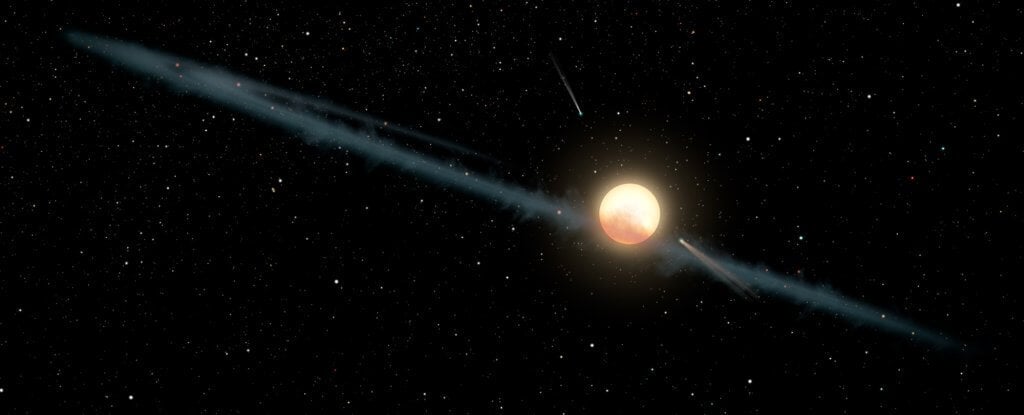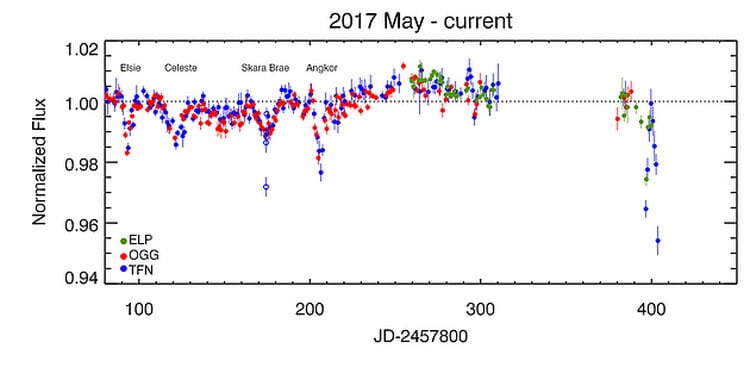
Not just caught the attention of the mysterious star KIC 8462852 in the constellation Cygnus, also known as the star Tabby, again a wink to the scientists. Tabetha, Boyajian, a planetary scientist from Yale University, who first discovered this star, reports that last week the facility has gone down dramatically to 10 percent. It was the biggest decline of the luminosity of the star since the telescope “Kepler” in 2011, when it briefly faded from 22 percent.
“Today we have big news — over the past week we have experienced two sharp decline in the brightness of KIC 8462852. In total, they decreased the luminosity by about 10%, which is the record value from the time when this sun observed “Kepler”. Our findings were confirmed by astronomers from the AAVSO draft”, — writes Boyajian.

Schedule changes of the luminosity of the star Tabby may 2017-present
In his blog, Boyajian reports that the first changes in luminosity were observed on March 16. Then the star faded by 4 percent, and then again returned to its normal luminosity. On March 26, the star has faded again.
Scientists can not yet give a definite answer to the question of what exactly makes a star, located approximately 1280 light years from us, to behave unusually, however, the new observations will contribute its use in forming a complete picture of what is happening and eventually will help to understand what is actually the case.
Initially, scientists assumed that everything can respond to the transit of some very large planets circling around the star Tabby. However, the irregular interval between the decline of the luminosity and, in fact, the rate of decline of the luminosity questioned this assumption.
Later came the hypothesis that a swarm of comets which occludes the light from observers on Earth. However, in January 2016, the American astronomer Bradley Schaefer has found that over the last century the brightness of KIC 8462852 inexplicably fell 0.16 magnitude that questioned this theory.
Last year the brightness of KIC 8462852 inexplicably declined in may, June, August, September, October, November and December. During the observations of these star “eclipses” scientists were able to reveal some features of the light and confirm that its orbit is indeed a large object, blocking the light. But the possibility that it is a Dyson sphere, astronomers rule.
According to the most convincing of today, the assumption around the star Tabby is unevenly distributed cloud of dust – this can explain the fact that in the ultraviolet range of the light star blocks is stronger than in the infrared. This cloud of dust must be really great to have the ability to block as many as 22 percent of the luminosity of the star. However, the option is considered one of the possible.
New fading stars Tabby, as I hope, Boyajian and its associates, will allow us to understand how the spectrum changes lights during such episodes. His analysis will help scientists to check whether the light KIC 8462852 obscured by a giant cloud of dust or are we talking about something more exotic.
Star Tabby again wink
Nikolai Khizhnyak